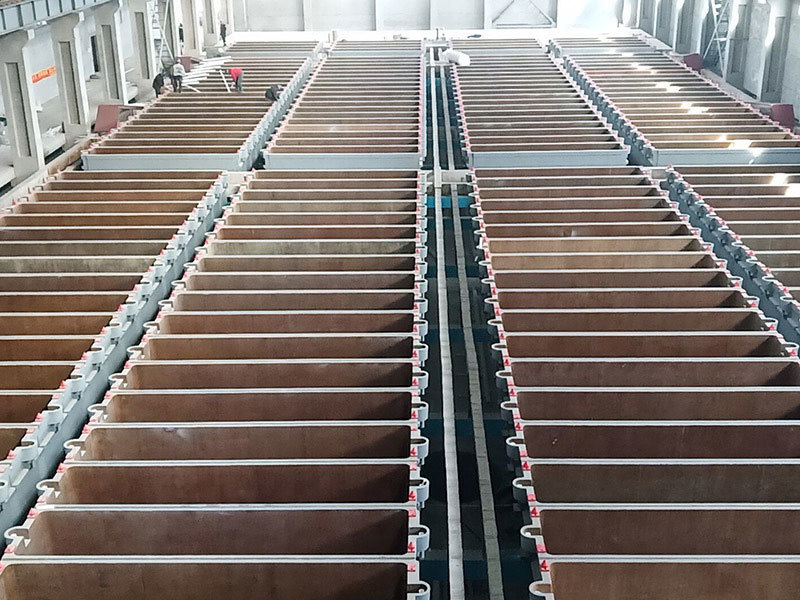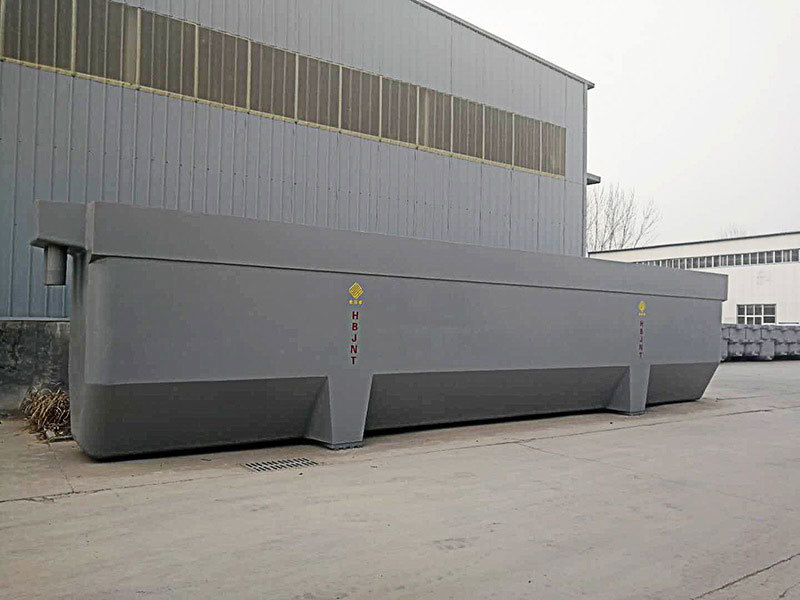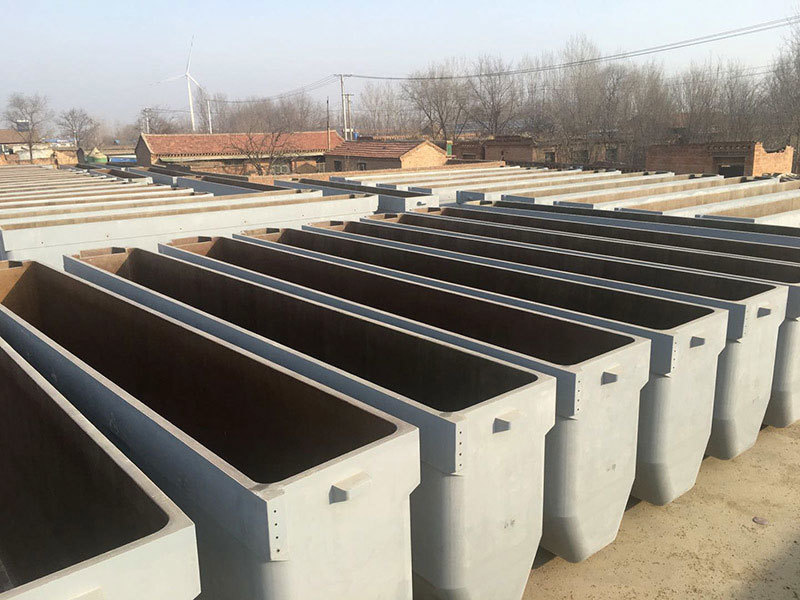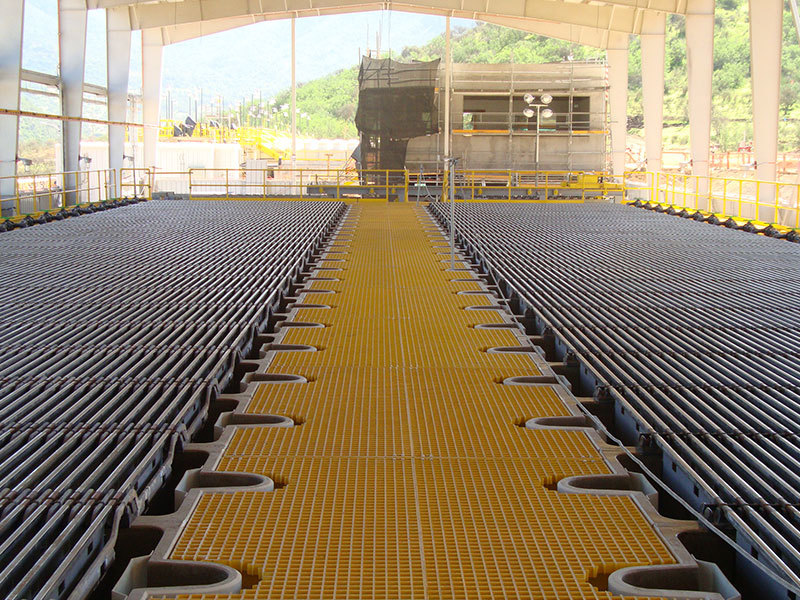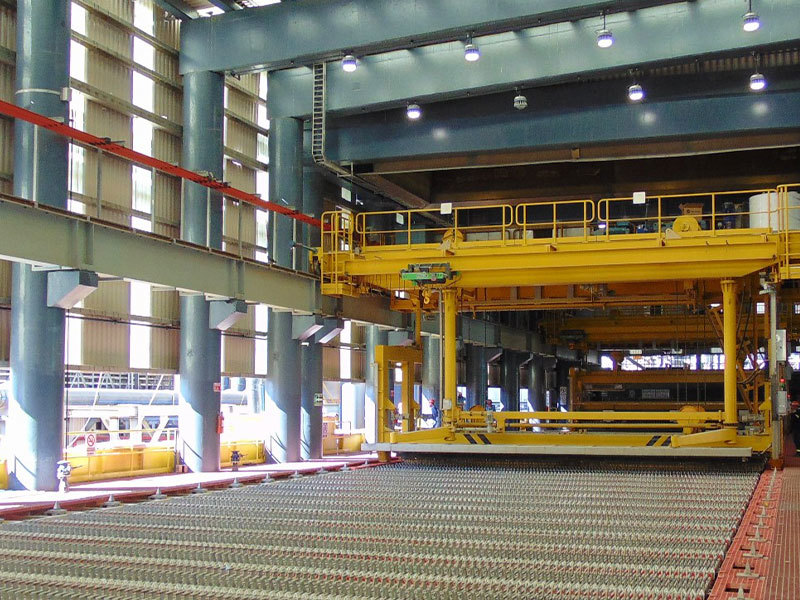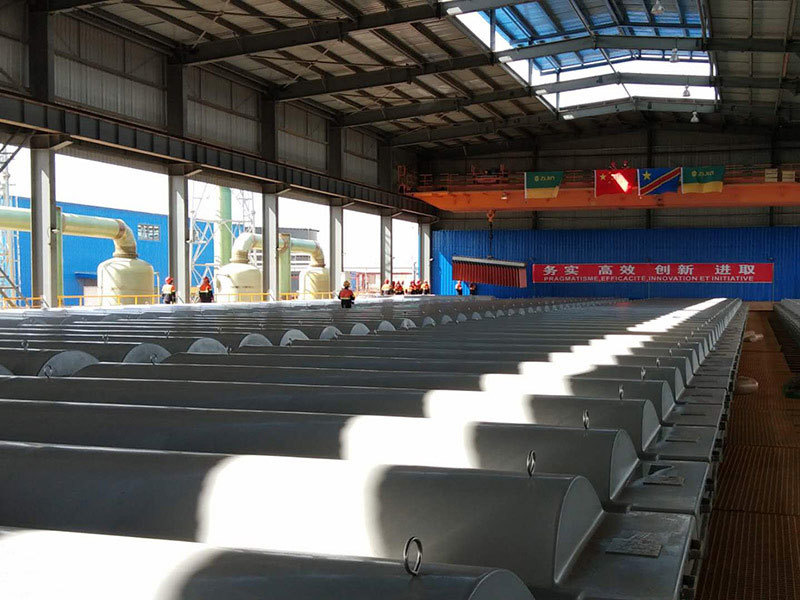Introduction to Vinyl Resin Integrated Casting Electrolytic Cell
Release time:
2024-05-23
Electrolytic cell is the core equipment of non-ferrous metal hydrometallurgy production, and its progressiveness technology directly affects product quality and production efficiency.
Electrolytic cell is the core equipment of non-ferrous metal hydrometallurgy production, and its progressiveness technology directly affects product quality and production efficiency. Vinyl resin integrated casting electrolytic cell was successfully invented by an American company in the 1990s and began to be applied in the production process of electrolytic copper. Due to its excellent corrosion resistance, thin wall and light weight, saving installation space, low maintenance costs, and long service life, it has been widely used worldwide and promoted to electrolytic processes such as zinc and nickel.
The electrolytic cell is composed of a tank body, an anode, and a cathode, and most of them are separated from each other by a diaphragm. According to the different electrolytes, it can be divided into three categories: aqueous solution electrolysis tank, molten salt electrolysis tank, and non-aqueous solution electrolysis tank. When direct current passes through an electrolytic cell, an oxidation reaction occurs at the interface between the anode and the solution, and a reduction reaction occurs at the interface between the cathode and the solution to produce the desired product. Optimizing the design of the electrolytic cell structure and selecting electrode and diaphragm materials reasonably is the key to improving current efficiency, reducing cell voltage, and saving energy consumption. The structure and function of the traditional electrolytic cell are independent of each other, and after the failure of the inner lining, the cell will be quickly corroded and damaged; The ethylene resin electrolytic cell combines the supporting function and anti-corrosion function, using ethylene ester resin, quartz sand, curing agent, promoter, etc. as the main raw materials. Through physical, chemical, mechanical and other composite processing methods, it is made into a multi base composite material, which has excellent properties such as corrosion resistance, heat resistance, high mechanical strength, and compressive strength.
The product has a novel structure, strong integrity, thin tank walls, insulation, and insulation, which will not generate induced current, improving the quality and efficiency of electrolysis. In addition, the excellent strength and hardness ensure that the tank body will not be damaged by the impact of the anode and cathode plates, greatly extending the service life of the electrolytic cell. Vinyl ester resin integrated casting electrolytic cell has become an important equipment in the non-ferrous metal smelting and electrolysis process due to its special advantages, gradually replacing traditional electrolytic cells and widely used in the wet smelting industry of metals such as copper, zinc, manganese, nickel, etc.
Key words:
Related News



